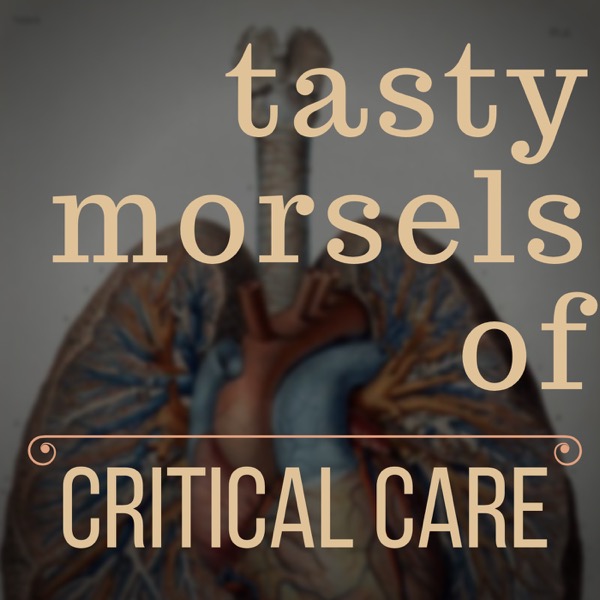Tasty Morsels of Critical Care 025 | Andrenocortical insufficiency
Tasty Morsels of Critical Care - A podcast by Andy Neill - Mondays

Welcome back to the tasty morsels of critical care podcast. The commonest time we think of adrenocortical insufficiency in the ICU is probably in sepsis. This post will definititely not cover the beast that is steroid use in the intensive care unit or its novel, all purpose moniker of CIRCI (Critical Illness Related Corticosteroid Insufficiency) Our natively produced steroids have their origins in the adrenal glands and specifically in the adrenal cortex. The 3 main types produced are classified as corticosteroids, mineralocorticoids and the sex hormones. Mostly what we’re interested in from the point of view of critical care is cortisol. Amongst other things cortisol is needed for: * adrenergic receptor synthesis and expression * wound healing * vascular tone * immune functions Cortisol has very complex interactions and receptor physiology that are not so much beyond the scope of this post but more beyond the capacity of my brain in general. It is normally secreted in a pulsed diurnal fashion and is under control of the HPA (Hypothalamic Pituitary Axis) In the blood you find it mainly protein bound but it’s the free portion that is the active bit. it is lipophilic, diffusing easily into cells and within the cells it can be in active and inactive states. All this complexity is to say that a serum level is often very poorly predictive of activity at a cellular level. You can classify adrenocortical insufficiency into 3 categories: * Primary * Secondary * Relative (CIRCI falls into this category) Primary adrenal insufficiency is most commonly known as Addison’s disease. Interestingly, when Addison’s disease as first described it was largely due to TB infiltration of the cortex which is a rare cause in western societies at this stage. These days it’s all auto immune where some immune reaction against the enzyme 21 hydroxylase renders the production of cortisol and mineralocorticoids useless. Autoimmune disease is the clear winner in terms of causes but some notable also rans on this list, include drugs, infection, malignant infiltration and haemorrhage or infarction. Our interaction with primary adrenal insufficiency will often come with an adrenal crisis. Often these patients will come with pre existent labels of Addison’s which makes our jobs very easy but every now and again we will have to make the diagnosis de novo. The classic presentation will be * shock * Abdo pain and vomiting * low Na * high k * Low glucose * Eosinophilia * NAGMA (apparently a type IV RTA for those keeping score) And our brainstem level response to this presentation should be give 100mg hydrocortisone and whatever fluid the patient needs. The UK society for endocrinology would be supportive even if you don’t do the cortisol level first. Interestingly they prefer the steroids as a 24 hr infusion which seems to be the fashion even if I’m unclear of the rationale or the evidence base. Secondary adrenal insufficiency is largely down to the long term use of steroids where the continual presence of cortisol screws up the HPA resulting in suppressed adrenals that are unable to crank up production when needed. Most of the clinical signs of crisis will be similar here. The main clinical difference here is that mineralocorticoid production is typically preserved in secondary adrenal insufficiency. Clinically this is noted by the absence of mineralocorticoid deficiency signs such as hyperkalaemia, the NAGMA or increased skin pigmentation. The final reminder is that any time someone on long term steroids or Addison’s gets admitted to hospital you should strongly consider bumping up their...
